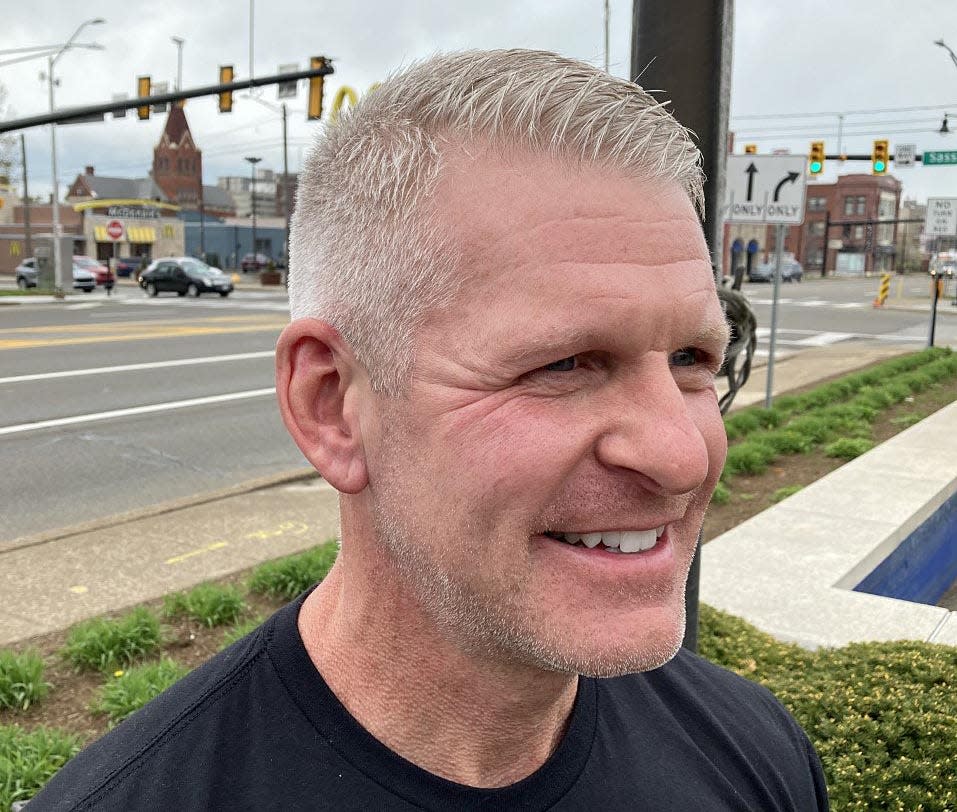An Erie firefighter beat melanoma. He and his doctor want to help others avoid skin cancer
Erie firefighter Bryan Delio was stunned in 2015 when Dr. Scott Lim handed him a card of melanoma lesions and a photo he'd just taken of Delio's right ear.
Delio, now 50, was visiting the Millcreek Township dermatologist to have a skin tag removed from near his nose. His wife suggested that Lim also take a look at a mole on Delio's upper right ear.
"Once he looked at my ear, Dr. Lim's whole demeanor changed," Delio said. "He asked how long did I have the mole, which was five to 10 years. He said, 'This isn't good.'
More: 'You saved my life': Millcreek woman beat melanoma with early detection and treatment
"He showed me a card of melanomas and the photo he took, and they all looked the same," Delio said. "I was caught off guard. I was shocked."
Melanoma is the deadliest type of skin cancer. Nearly 8,000 Americans are expected to die from melanoma in 2023, according to the Melanoma Research Foundation, though treatment options for advanced cases have improved.
Lim took a biopsy of the mole and testing confirmed it was melanoma. Delio was sent to the Cleveland Clinic's dermatology department to have the mole removed.
"They took out a nickel-sized hole in my ear and they felt they got everything. It hadn't spread," Delio said. "I went back 10 days later to get a skin graft, and the doctor said it was already starting to heal. I didn't need the graft."

Delio said he probably developed melanoma after suffering countless severe sunburns as a child and young adult. But he and Lim also know that firefighters have a higher risk for many types of cancer, according to a study published by the National Institute for Occupational Safety and Health.
The increased risk could be due to exposure to carcinogens when battling fires. Though skin cancer was not among the cancers listed in the study, the American Academy of Dermatologists created a program to offer firefighters free skin cancer screenings.
Lim and his staff performed the first such screening in northwestern Pennsylvania, checking 42 Erie firefighters on April 21.
"We saw quite a few precancerous lesions due to sun damage and a few atypical moles," Lim said. "I'd say we referred about 20% of the firefighters to a provider for various things."
More: Fact check: UV radiation causes sunburns, skin cancer
Lim said firefighters might have a higher risk of skin cancer because the carcinogens found at a fire can end up on their faces and gear.
"They get all that soot and chemicals on their face and neck," Lim said. "They are sweating, so their blood vessels are more dilated and their pores are open, so they absorb more of it."
Lim hopes to conduct more screenings in the near future so firefighters with other Erie-area departments can participate.
Delio didn't take part in Friday's screening because he sees Lim once a year as part of his post-melanoma care.
"I also take precautions, like wearing sunsleeves when I bike and swim shirts when I go in the water," Delio said. "I also wear a boonie hat when I go outside, because it protects my ears and neck. And I apply a lot of sunscreen."
Contact David Bruce at dbruce@timesnews.com. Follow him on Twitter @ETNBruce.
This article originally appeared on Erie Times-News: Melanoma battle didn't stop Erie firefighter

